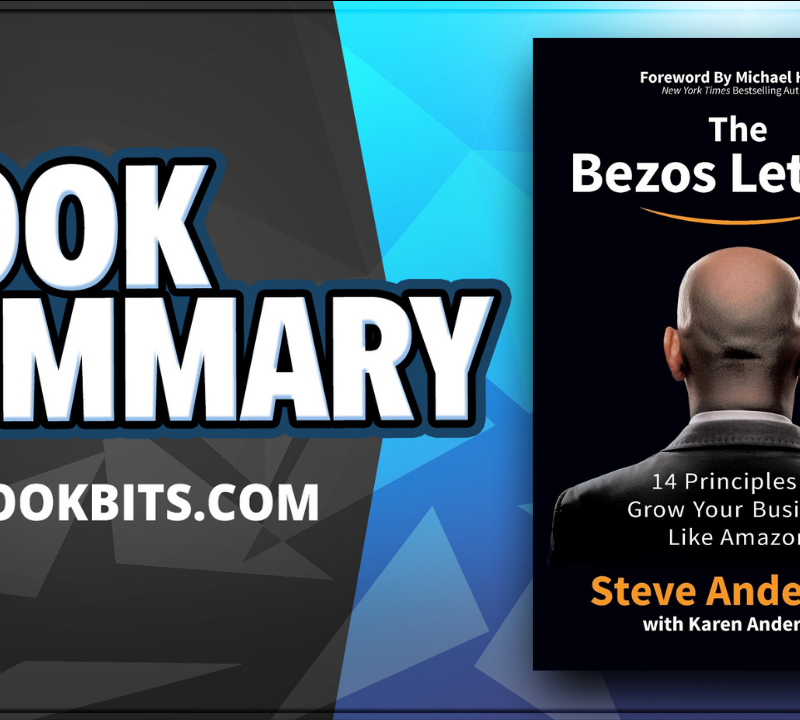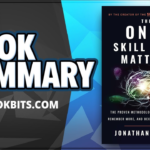JOIN THE ‘BEST BOOK CLUB’ NOW HERE
DOWNLOAD THIS FREE PDF SUMMARY HERE
STOP TRYING TO ACHIEVE YOUR GOALS BY YOURSELF AND BE COACHED TODAY HERE
CHECK OUT THE FOLLOWING Book | Summaries | Course | YouTube |Spotify | Instagram | Facebook | Newsletter | Website
Summary of Rage by Bob Woodward
Rage is a piece of original reporting on Trump’s presidency. Woodward has had 18 one-to-one interviews with Trump during his presidency. He uses this information to outline how Trump responded dangerously to Coronavirus and the Black Lives Matter movement. Additionally, Bob Woodward outlines how Trump’s cover-up of Coronavirus’ severity is a response rooted in his character as President. Trump’s public portrayal of the pandemic was in-line with the instincts, habits, and style he adopted in the first three years of his presidency.
About Bob Woodward
Bob Woodward is an assistant managing editor of The Washington Post. He has been an investigative reporter for newspapers for over 50 years. Bob’s work, alongside fellow reporter Carl Bernstein, helped uncover the Watergate scandal that led to US President Richard Nixon’s resignation. Woodward has written 13 bestselling books and has also shared in two Pulitzer Prizes.
“He’s the kind of person that would inspire crazy people.”
– Bob Woodward
On North Korea
Upon becoming President-Elect, Trump was advised by Obama that North Korea would be Trump’s most dangerous and time-consuming problem. Kim Jong Un, the North Korean leader, was armed with nuclear weapons. Additionally, North Korea was building an intercontinental ballistic missile that could reach the United States.
These warnings encouraged Trump to invite Matt Pottinger, head of Asia policy for the National Security Council, to his office on the sixth day of his presidency. Matt Pottinger would eventually become Trump’s Deputy National Security Adviser. Matt described Obama’s strategic patience with North Korea to be a disaster. Within a month, Matt had designed nine options for Trump for the US’ North Korean strategy. These nine options fell into three categories.
- Accept North Korea as a nuclear power
- Regime change in North Korea through CIA covert action
- A military attack on North Korea
Based on this advice, he decided on a policy of maximum pressure against North Korea. Specifically, he ratcheted up economic, rhetorical, military, and diplomatic pressure. Additionally, he was willing to use CIA covert action if needed. Trump adopted this approach as he saw it as a way of showing Kim Jong Un he was in great danger if he continued with his military efforts. Trump hoped this regime would convince Kim that holding nuclear weapons would be more dangerous for him and North Korea than disarming themselves. Trump explained to Bob that people do not realize how close the US and North Korea were to war.
However, within the editorial notes, Bob speaks about how this relationship between Trump and Kim Jong Un changed. The two leaders met three times and exchanged dozens of letters. Bob gained access to these letters and, in the book, describes some of the content. In one of the letters, Kim Jong Un describes his and Trump’s meetings and their relationship as being like something out of a fantasy film. Kim also said that there was a magical force between them. Kim is also quoted as writing ‘Even now, I cannot forget that moment of history when I firmly held your excellency’s hand as the whole world watched.’
The CIA looked at these letters, particularly as they were uncertain these letters were written by Kim. The CIA never identified who had written the letters, but the analysts did conclude that the letters were masterpieces in controlling Trump. The letters appealed to Trump’s sense of grandiosity.
Economic Pressure
The aim of applying economic pressure to North Korea was to choke off their ability to make money in overseas embassies. This approach from Trump prevented North Korea from trading effectively across 48 countries. For example, Trump banned 100 percent of coal exports. As the US led with this regime, this pushed other countries to follow suit. Therefore, multiple countries agreed to push North Korea out of its trade. Additionally, North Korean seafood operations abroad, which were run by the North Korean military, were shut down. Finally, North Korea’s oil imports were cut off.
JOIN THE ‘BEST BOOK CLUB’ NOW HERE
DOWNLOAD THIS FREE PDF SUMMARY HERE
STOP TRYING TO ACHIEVE YOUR GOALS BY YOURSELF AND BE COACHED TODAY HERE
CHECK OUT THE FOLLOWING Book | Summaries | Course | YouTube |Spotify | Instagram | Facebook | Newsletter | Website
On Black Lives Matter
The Black Lives Matter movement was invigorated on May 25th, 2020, when a Minneapolis police officer was caught on video with his knee on the neck of George Floyd. The police officer kept his knee on George Floyd’s neck for eight minutes and 46 seconds. Ultimately, this killed the 46-year-old Black man. This crime encouraged a wave of protests in more than 2,000 cities and towns across America. These protests aimed to challenge police brutality and were the largest in America since the Civil Rights Movement and the Vietnam War.
The majority of the protests were peaceful, but some rioting also occurred. In Washington, a historic Episcopal Church, just 1,000 feet from the White House, was set on fire. Following this, and other examples of rioting, Trump had a phone call with governors that afternoon. Trump emphasized the importance of using force on demonstrators. Bob Woodward quotes Trump as having said, “You have to dominate. If you don’t dominate, you’re wasting your time. They’re going to run all over you, you’ll look like a bunch of jerks. You have to dominate, and you have to arrest people, and you have to try people and they have to go to jail for long periods of time.”
Bob describes the response to these instructions as aggressive. On that same day, hundreds of peaceful protestors gathered in Lafayette Square (a public park near the White House). At approximately 6:30 p.m., without being provoked, officers in riot gear advanced on the protestors. They tossed riot control devices into the crowd that created explosions, sparks, and smoke. Protestors were pushed to the ground, shot with rubber projectiles, and sprayed with chemical agents. Also, the officers shot pepper balls at the peaceful protestors. Pepper balls are projectiles that contain a powdered chemical that irritates eyes and noses. After these aggressive actions, the local mayor, Bowser, stated that she “didn’t see any provocation that would warrant the deployment of munitions.”
Bob Woodward described these officers’ behaviors as unlawful force against individuals exercising their First Amendment rights to assemble. While this was all happening, Trump had organized a speech outside the White House. This speech took place at 6:48 p.m. Trump spent most of this speech talking about how the country was filled with riots and lawlessness. He also recommended that each governor deployed the National Guard in sufficient numbers to solve the problem quickly.
After his speech, Trump walked to the church that had been attacked by rioters. He stood in front of the church for about two minutes holding a bible and waving it around. Bob describes the conversation that took place between Trump and the reporters:
- Reporter-Is that your bible?
- Trump-It is a bible
- Reporter-What are your thoughts?
- Trump-We have a great country
The Bishop of the church responded with outrage. The Bishop explained that Trump had used the church as a prop, and everything he said during his speech was to inflame violence. Bishop Michael Curry said, “This evening the President of the United States stood in front of St John’s Episcopal Church, lifted up a bible, and had pictures of himself taken. In so doing, he used a church building and the Holy Bible for partisan political purposes.”
Trump’s speech continued to have a lasting effect afterward. The footage only showed two protesters throwing water bottles at police officers. However, two helicopters, operated by the DC Army National Guard, hovered over the remaining protesters. They flew so low (45 feet) that the wind speeds were described as being equivalent to a tropical storm. For example, the wind speeds were able to snap thick tree limbs. These helicopters are generally used to disperse civilians in war zones.
Bob had an interview with Trump after these events. When asked about the treatment of protesters, Trump described the reporting as “total bullshit” and that they “didn’t use tear gas.” Bob explained to Trump that there were witnesses, reporters, and videos of tear gas being used. Trump merely responded by outlining how these same people had tried to burn down the church the day before. The media described them as nice people, but Trump argued that they were the opposite. Trump concluded this interview by explaining that the Bible picture was all his idea. Bob accepts that some people might have liked what Trump did, but most people did not.
JOIN THE ‘BEST BOOK CLUB’ NOW HERE
DOWNLOAD THIS FREE PDF SUMMARY HERE
STOP TRYING TO ACHIEVE YOUR GOALS BY YOURSELF AND BE COACHED TODAY HERE
CHECK OUT THE FOLLOWING Book | Summaries | Course | YouTube |Spotify | Instagram | Facebook | Newsletter | Website
On Coronavirus
“I wanted to always play it down,” Trump told me. “I still like playing it down, because I don’t want to create a panic.”
– Bob Woodward quoting Donald Trump
Bob Woodward talks about how Trump knew about the significant danger of Coronavirus months before it became a pandemic. On January 28th, 2020, a top-secret President daily briefing took place. The discussions in the Oval Office turned to a pneumonia-like virus that had outbroken in China. At this time, Trump was explaining to the public that the virus was low-risk for the US. Despite Trump playing the virus down in public, he was being told by his national security adviser, Robert O’Brien, that the Coronavirus would be “the biggest national security threat that you will face in your presidency.” The deputy national security adviser, Matt Pottinger, agreed with Robert O’Brien after he made this comment. Trump understood the danger of Coronavirus after hearing Matt Pottinger agree. Matt had lived in China for seven years and was also the Wall Street Journal reporter on the SARS outbreak. Matt was also a China scholar who could speak fluent Mandarin. Matt understood that the Chinese were masters at covering up trouble. He had written over 30 stories on how China had intentionally withheld information about SARS. His work on SARS led to him being put forward for a Pulitzer Prize.
Trump was willing to listen to Matt and asked him what he knew. Matt had been following Chinese social media and calling multiple doctors and healthcare experts in China. These conversations were very worrying. Matt had asked these experts if Coronavirus would be as bad as the SARS pandemic of 2003. The response: “Don’t think SARS 2003, think influenza 1918.”
The Spanish Flu of 1918 killed approximately 50 million people worldwide. Based on Matt’s knowledge, months before the pandemic changed the lives of all Americans, Trump already knew:
- The virus was more easily spread than SARS
- People were easily getting the disease from humans and not just animals
- The virus was being spread by people who aren’t even showing symptoms. 50 percent of individuals who were infected were showing no symptoms
Matt was describing the Coronavirus as a once-in-a-lifetime health emergency. Also, Matt was worried that China had quarantined Wuhan, a city larger than any other American city. Despite this, the Chinese could still travel to any country worldwide. This included America. Matt explained to Trump that a silent and deadly virus was already streaming into the US and that they needed to cut off travel from China to the US.
Trump did act on this suggestion. Three days later, he imposed restrictions on travelers from China. However, Trump avoided talking about the virus in public. He preferred to talk about the upcoming Super Bowl, his State of the Union address, and his impeachment trial. If Coronavirus was ever brought up in public, Trump would outline that the US faced minimal risk.
Trump continued to avoid accepting Coronavirus’ severity when giving his annual State of the Union Address two days later. Nearly 40 million people tuned in. When queried about Coronavirus, Trump did not provide any of the warnings that Matt gave him. Trump has later accepted that he has aimed to play down the Coronavirus as he did and does not want to cause a panic. However, Bob explains that Trump would accept less reliable sources to support his minimization of the pandemic. For example, when the US only had twelve cases, Trump told Bob about a conversation he had with President Xi Jinping of China.
JOIN THE ‘BEST BOOK CLUB’ NOW HERE
DOWNLOAD THIS FREE PDF SUMMARY HERE
STOP TRYING TO ACHIEVE YOUR GOALS BY YOURSELF AND BE COACHED TODAY HERE
CHECK OUT THE FOLLOWING Book | Summaries | Course | YouTube |Spotify | Instagram | Facebook | Newsletter | Website
Trump had been convinced that summer’s heat would get rid of the virus.
Only later would Bob find out that Trump had been warned multiple times by his top advisers that the Coronavirus would have such a significant impact. Plus, that Trump’s top health adviser wanted to get their medical team into China to investigate, but that Xi had rejected this. Both Xi and Trump were concealing the severity of the Coronavirus.
Bob concluded the book’s section on Coronavirus by explaining how Trump’s handling of the pandemic is an example of Trump’s character as a president:
“I now see that Trump’s handling of the virus-certainly the greatest test for him and his presidency, at least so far-reflects the instincts, habits and style acquired in the first years as president and over the course of a lifetime.”
– Bob Woodward
Controversy Elevates Messages
Bob explains that Jared Kushner, Trump’s Senior Advisor, is quoted as having told him that “Controversy elevates messages.” What Jared means by this is that any type of controversy, as long as it is relatively positive, will have a huge impact on the public’s view of you.
For example, Jared gave Bob the example of Trump arguing that America under him is the most powerful economy in history. Making a claim like this means that fact checking is not enough. Some individuals might claim that America of the 1950s or the Roman empire were more powerful economies, yet at this point the public is already caught up in the controversy. Getting into these fights means that facts cannot sway the public’s minds. Trump has also been using this ‘controversy’ approach during the coronavirus to take people’s minds off of the way he has handled the pandemic.
Why did Trump let Bob Woodward Write this Book?
Bob Woodward explains that he believes Trump now accepts that what Bob wrote in his first book on the Trump administration, Fear, was true. Plus, Trump told Bob on multiple occasions that it was a mistake of his to not talk to Bob previously. In fact, Trump personally accepted that it was his fault that he did not talk to Bob in the past. Trump had come to believe that Bob would not put words into his mouth. Hence, his best option was to talk to Bob and tell him his side of the story.
Bob was also surprised by the degree of cooperation that he had from Trump. For example, Trump initiated calls with Bob Woodward on seven occasions. There were even occasions when Trump called Bob at 10 P.M. Bob has written books on presidents before, which led to him having conversations with other presidents, but none have come close to the number of conversations he has had with Donald Trump. Bob attributes this to Trump having lots to say and having a willingness to let Bob inside.
Finally, Bob also explains that Trump opened up to him because he was famous. Trump has been unwilling to listen to some of the people in his administration, but Trump is obsessed with fame. Therefore, Trump was willing to talk to Bob as he saw him as a fellow celebrity.
The Final Sentence of the Book
Bob Woodward ends the book by simply saying that Donald Trump is the wrong man for the job. This was a unique occurrence, as Bob Woodward is known for not making strong conclusions one way or another. Bob explains that he made this decision based on overwhelming evidence that Trump could not rise to the occasion during the Coronavirus pandemic.
JOIN THE ‘BEST BOOK CLUB’ NOW HERE
DOWNLOAD THIS FREE PDF SUMMARY HERE
STOP TRYING TO ACHIEVE YOUR GOALS BY YOURSELF AND BE COACHED TODAY HERE
CHECK OUT THE FOLLOWING Book | Summaries | Course | YouTube |Spotify | Instagram | Facebook | Newsletter | Website













